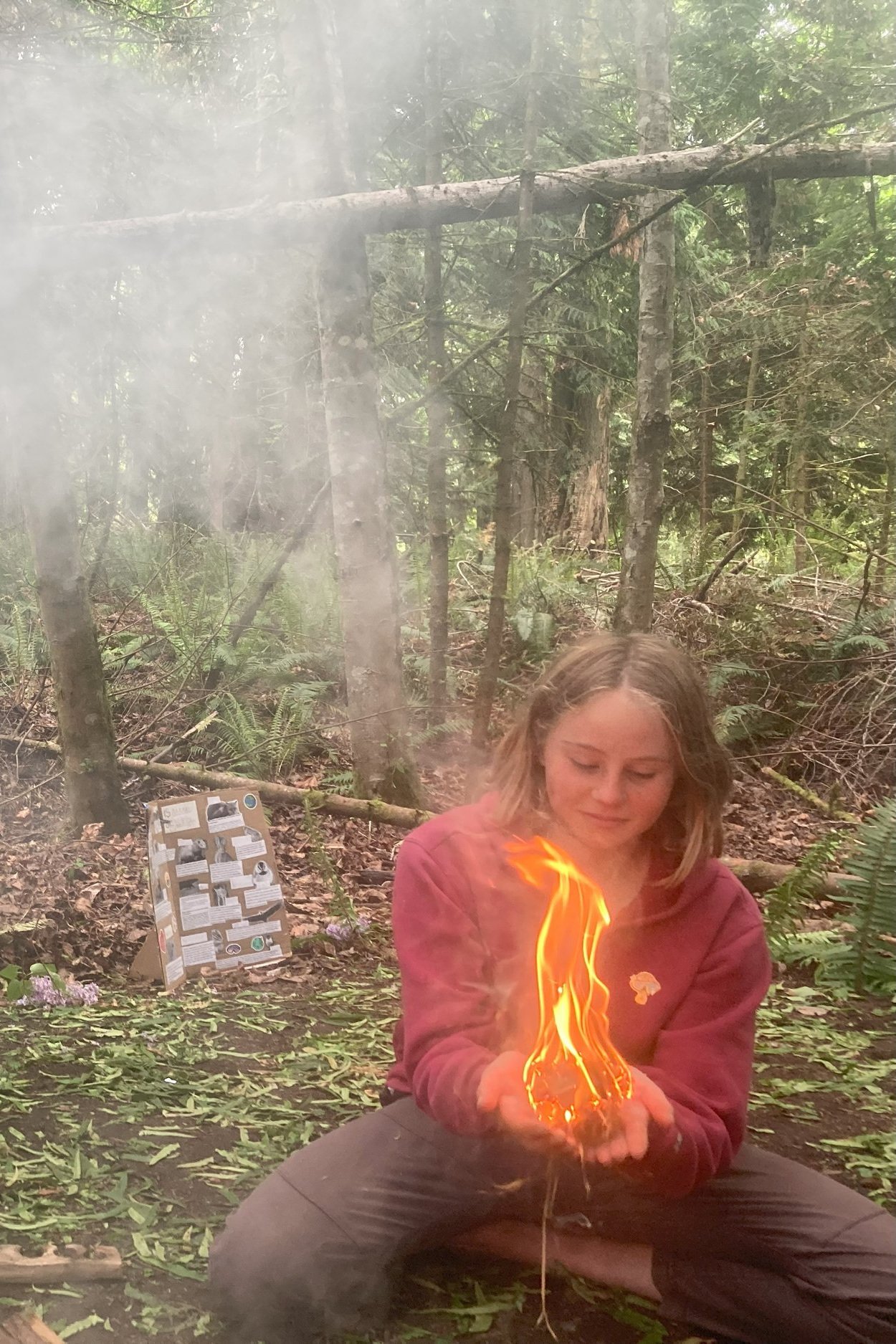



Calculated Risks
Can you remember climbing a tree as a child? Crossing a cold stream? Walking cautiously on a fallen log across a ravine? A forest walk at night without flashlights? Carving with your first knife? At CedarRoot, we believe that allowing our youth to take calculated risks is a crucial part of healthy growth and development, and there has been A LOT of research to back our philosophy.
“Risky” play allows children to experience fear and anxiety and learn how to handle these emotions. Adults have a huge role in encouraging children to stretch their limits in a nurturing setting. It has been well documented that a child who doesn’t have ample opportunities to take calculated risks in childhood will engage in much more reckless behavior when they are a young adult and away from parent supervision.
The outdoor environment is challenging but not necessarily hazardous for children, and it is important to make this distinction. Our instructors are trained to be hazard-aware rather than risk-averse. Since risk varies from each individual, our school-year programs offer enough outdoor hours with our trained instructors, that we get to personally know the capabilities of each kid. For some kids, walking on uneven ground is a challenge; for others, it’s maintaining balance on a suspended log for an extended period of time.
Our goal at CedarRoot is to help students connect to themselves, each other and the planet. We feel honored to be spending so many days outside helping foster the next confident generation! We hope your child can join us in our next adventure.
- Scott Brinton, CedarRoot’s Director
Resources
Little, H. (2020, December 2). Promoting children’s risky play in outdoor learning environments. The Education Hub. https://theeducationhub.org.nz/promoting-childrens-risky-play-in-outdoor-learning-environments/
Gill, T. (2007). No fear: Growing up in a risk averse society. London: Calouste Gulbenkian Foundation.
Little, H. (2015). Mothers’ beliefs about risk and risk-taking in children’s outdoor play. Journal of Adventure Education & Outdoor Learning, 15(1), 24-39. https://doi.org/10.1080/14729679.2013.842178
Little, H. (2017). Promoting risk-taking and physically challenging play in Australian early childhood settings in a changing regulatory environment. Journal of Early Childhood Research, 15(1), 83-98. https://doi.org/10.1177/1476718X15579743
Little, H., & Wyver, S. (2008). Outdoor play: Does avoiding the risks reduce the benefits? Australian Journal of Early Childhood, 33(2), 33-40.
Herrington, S., & Pickett, W. (2015). Position statement on active outdoor play. http://childnature.ca/wp-content/uploads/2017/10/B.-EN-Active-Outdoor-Play-Position-Statement-FINAL-DESIGN.pdf
Stephenson, A. (2003). Physical risk-taking: Dangerous or endangered? Early Years, 23(1), 35-43. https://doi.org/10.1080/0957514032000045573
Sandseter, E. B. (2007). Categorising risky play – how can we identify risk-taking in children’s play? European Early Childhood Education Research Journal, 15(2), 237-252. https://doi.org/10.1080/13502930701321733
Kleppe, R., Melhuish, E. & Sandseter, E.B. (2017). Identifying and characterizing risky play in the age one-to-three years. European Early Childhood Education Research Journal 25(3), 1–16. https://doi.org/10.1080/1350293X.2017.1308163
Ministry of Education (2017). Te Whāriki. He whāriki mātauranga mō ngā mokopuna o Aotearoa: Early childhood curriculum. Wellington: Ministry of Education.
Fjortoft, I. (2001). The natural environment as a playground for children: The impact of outdoor play activities in pre-primary school children. Early Childhood Education Journal, 29(2), 111-117. https://doi.org/10.1016/S0169-2046(00)00045-1
Sandseter, E.B. (2009a). Children’s expressions of exhilaration and fear in risky play. Contemporary Issues in Early Childhood, 10(2), 92-106. https://doi.org/10.2304%2Fciec.2009.10.2.92
Sandseter, E. B. & Kennair, L. E. (2011). Children’s risky play from an evolutionary perspective: The anti-phobic effect of thrilling experiences. Evolutionary Psychology, 9(2), 257-284. https://doi.org/10.1177/147470491100900212
Majdandžić, M., Lazarus, R., Oort, F., van der Sluis, C., Dodd, H., & Morris, T. (2018). The structure of challenging parenting behaviour and association with anxiety in Dutch and Australian children. Journal of Child and Adolescent Psychology, 47(2), 282-295. https://doi.org/10.1080/15374416.2017.1381915
Sandseter, E.B. (2009b). Affordances for risky play in preschool: The importance of features in the play environment. Early Childhood Education Journal, 36(5), 439-446. https://doi.org/10.1007/s10643-009-0307-2
Ball, D. J., Gill, T., & Spiegal, B. (2008). Managing risk in play provision: Implementation guide (2nd ed.). Retrieved June 1, 2015, from http://www.playengland.org.uk/media/172644/managing-risk-in-play-provision.pdf
